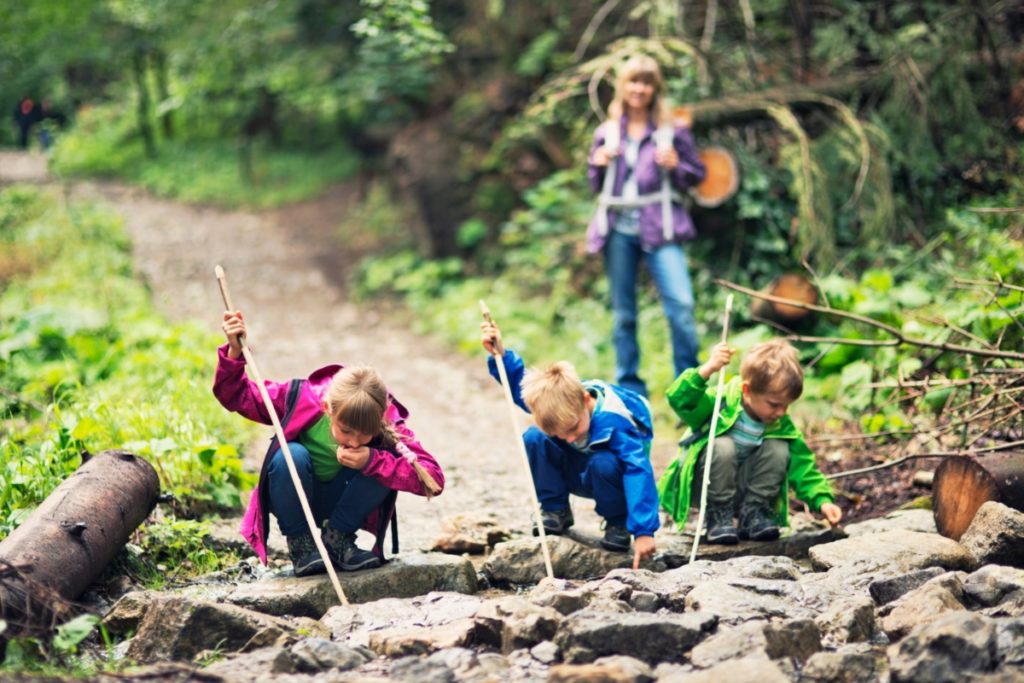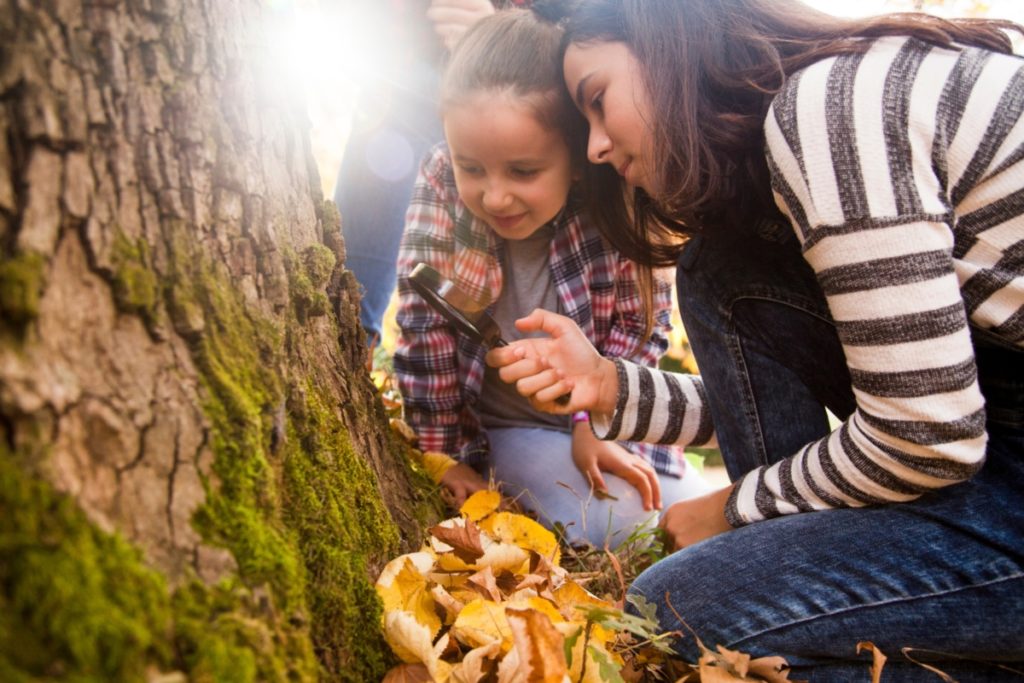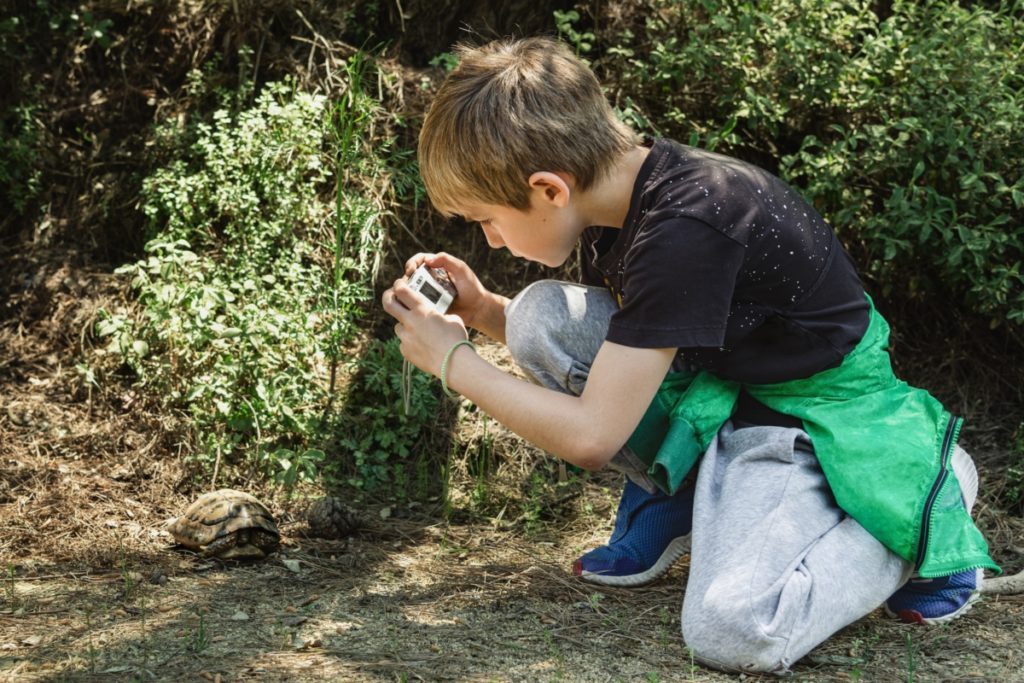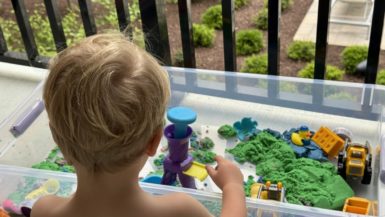What is wildschooling? Wildschooling is learning that takes place in the natural world, it’s a type of unschooling. It involves spending time outdoors in nature, learning about plants and animals, and studying ecosystems.
The goal of wildschooling is to allow children to learn about the world around them in a hands-on way, without the structure of traditional schooling. This type of learning can be beneficial for both children and adults, as it allows for a more flexible and creative approach to education.
Have you seen the movie Captain Fantastic? If not, you should – it gives a perfect example of wildschooling.
Wildschooling is not a new concept, but it has gained popularity in recent years as more parents and educators are looking for alternative methods of education. There are a number of reasons why wild schooling may be appealing, including the belief that it can help children to develop a stronger connection to nature, and that it can provide a more holistic approach to learning.
Wildschooling is somewhat controversial, as there is no clear definition of what it is, and it’s not regulated by any educational authorities. Some people even believe that wildschooling is a form of child neglect, as it does not provide children with a formal education. However, many parents who unschool their children believe that wildschooling is a more natural and beneficial way to learn and that it is a valid alternative to traditional schooling.
Wildschooling vs Unschooling vs Homeschooling
Wildschooling is a form of unschooling, but with a focus on nature. Many parents who are interested in wildschooling are drawn to the idea of providing their children with a more natural and holistic approach to education. Wildschooling can help children to develop a stronger connection to nature, and to learn about the world around them in a more hands-on way.
Often, disappointment with the mainstream education system is a driving force behind the decision to consider wildschooling. Some parents feel that their children are being stifled in school, or that they are not learning in a way that meets their needs. Others may believe that the traditional education system is too restrictive and that it does not allow for enough creativity or individual expression.
Wildschooling is different from homeschooling as children are not forced to follow the curriculum or take tests.
Wildschooling is different from worldschooling, as children are not traveling to learn about cultures and experience things, rather than spend time outdoors.

Examples of Wildschooling
The unstructured nature of wildschooling means that there is no one way to do it. Some families who wildschool travel frequently, and spend most of their time outdoors. Others may live in one place, but take advantage of local resources, such as parks and nature trails.
Some parents who homeschool children can wild school part-tim, as lot of overlap between the two concepts. Homeschooling is often more flexible than traditional schooling, which can make it easier to incorporate wildschooling into the curriculum. Other parents who wildschool their children may send them to a traditional school part-time, and supplement their education with trips and activities outside of school.
What Are the Benefits of Wildschooling?
Wildschooling can have a number of benefits for both children and adults. Some of the benefits include:
- It allows children to learn in a more natural environment.
- Children can develop a stronger connection to nature.
- It encourages creativity and individual expression.
- It provides a more holistic approach to education.
- Children can develop strong critical thinking skills as they solve naturally occurring problems.

What Are the Challenges of Wildschooling?
Wildschooling is not without its challenges. There are a few common problems parents who choose wild schooling often face. Some of the challenges of wildschooling include:
- Misconceptions may cause others to see it as a form of child neglect.
- Wildschooling does not provide children with the same level of academic rigor as traditional schooling, which might not be right for every family’s education goals.
- Accessibility can be an issue, as not everyone is able to spend a lot of time outdoors.
- In many areas, it can be difficult to connect with other families who are wildschooling, which can make it isolating.
- It’s almost impossible to transfer to a regular school as curriculum doesn’t always overlap at all, so kids might be forced to go back a grade or even two.
Wildschooling Activities
There are a number of different activities that families who wildschool their children can do together. To give you an idea of what wildschooling might look like, here are a few examples of popular wildschooling activities:
- Exploring nature trails and parks
- Visiting local farms
- Identifying different plants and animals
- Tracking the changing seasons
- Making art with natural materials
- Foraging for food
- Fishing and hunting for food
- Building shelters or woodworking with real tools
- Making a fire and cooking food over it
- Learning about different ecosystems

Approaches to Wildschooling
Wildschooling isn’t just for unschoolers. There are a number of complementary educational styles that families interested in wildschooling should consider. Wildschooling continues to take inspiration from a wide range of sources like the Reggio Emilia Approach, Earth Schooling, Waldorf, Charlotte Mason, Montessori, peaceful parenting.
Charlotte Mason
The Charlotte Mason approach to education is based on the belief that children should be exposed to a wide variety of experiences, and that they should be allowed to explore the world around them.
It’s based on the writings of Charlotte Mason, a British educator from the late 1800s. She advocated for children to spend at least an hour a day outside, regardless of the weather. This approach is well suited to wildschooling, as it emphasizes hands-on learning, and encourages creativity and imagination.
Waldorf Education
Waldorf education is another approach that is well suited to wild schooling. This style of education emphasizes the importance of nature, and the natural world, in children’s development.
It also focuses on providing a creative and nurturing environment for learning, which can be easily achieved through wildschooling. There’s also an emphasis on crafts and art in Waldorf education, which is another activity that can be easily incorporated into wildschooling.
Montessori Education
The Montessori approach to education is based on the belief that children should be allowed to learn at their own pace, and in their own way. This approach is well suited to wildschooling, as it allows children the freedom to explore their interests, follow their own natural curiosity, and become independent.
Unschooling
Finally, unschooling is an educational approach that is based on the belief that children should be allowed to learn through their everyday experiences without the structure of formal schooling.
Unschooling is well suited to wildschooling, as it allows children to learn in a more natural and relaxed setting. Unschooling emphasizes hands-on learning, and allows children to explore the world around them in their own way.

Potential Cons of Wildschooling
There are a few other things to consider if you want to incorporate wildschooling into your family’s life.
- You should know the laws in your area regarding home education and unschooling, as these may apply to wildschooling as well. There are likely minimum requirements that you have to meet to comply with local laws, so you may need to get creative with how you’ll do that while focusing on wildschooling.
- You’ll need to be prepared to deal with the challenges that come with not following a traditional educational path. Thinking about how you’ll handle these ahead of time will empower you to proceed with confidence.
- You should help your child build skills that will help them stay safe and healthy while exploring nature, such as learning how to identify poisonous plants and how to deal with certain situations.
- Connecting with like-minded families can be a great way to get support, and to find resources and ideas.
Wildschooling is a unique approach to education that has a number of benefits. It can help children to develop a stronger connection to nature, and to be more creative and expressive. If those sound like values you want to instill in your children, then wildschooling might just have a place in your family’s life.






Leave a reply